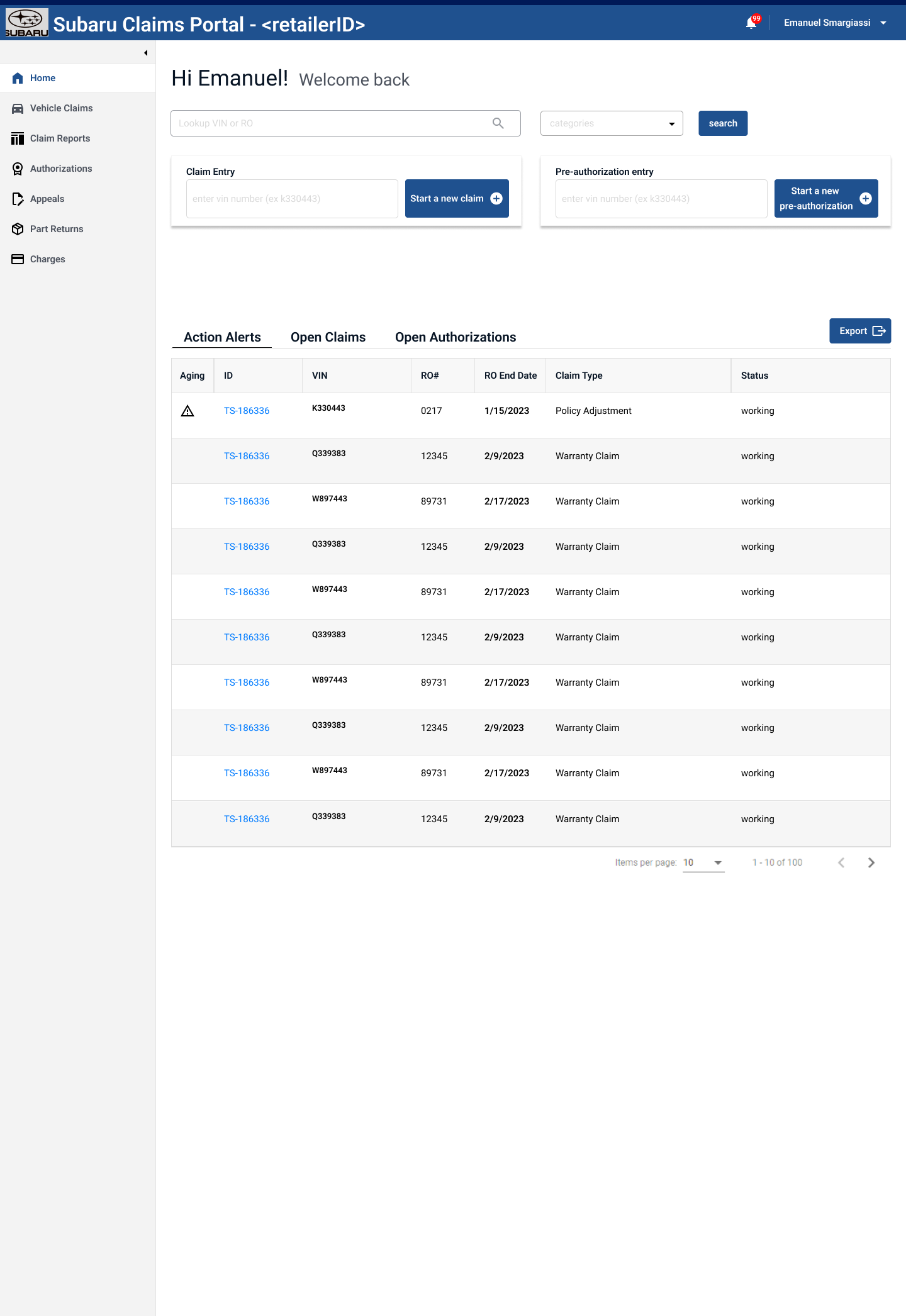Subaru of America
SoA - warranty claim system


Warranty claim system.
Wireframes, user flows, visuals, and prototype.
Subaru of America.
winter 2022-2023.
Lead UX Designer.
Figma, Miro.
Subaru of America (SoA) had an aging warranty system that their retailers were utilizing. They needed an updated system built off of Angular and wanted to address certain usability concerns and make the system more seamless for the end user technicians.
Support features requested by stakeholders Modernize look and feel of application Create standardized design system to facilitate faster prototyping and development Improved navigation for technicians Lowered times spent making claims
Using current and former technicians recruited from retailers and Subaru employees, we were able to validate stakeholder's and our own hypothesis while identifying pain points that technicians had. We interviewed approximately a dozen technicians and used feedback stakeholders received from technicians over the course of several months to align our assumptions on a better way to complete warranty claims.
"Why do I need to go through several steps to even start a claim?"
"I wish there was a way to upload documents without going through the computer"
"I'm usually entering in a stack of claims for a portion of my day and not bothering with the rest of this program"
"If there's a problem with a claim, we should know about it immediately"
Working with technicians at SoA by interviewing them and finding out integral pain points, we started redoing a the user flows for the warranty application. Along with this, we built a design system based off of Material Design so that development and prototyping times would be faster and we would be creating a consistent style across the entire application. One key takeaway was seeing how technicians were utilizing the existing application. They would have a stack of work orders they needed to enter into the system, and were typically adding another immediately after creating a work order. They generally would not be adding a work order and then doing other tasks.

One of the biggest issues is that the previous system did not allow the user to directly make pre-authorizations or new claims. They would be required to go through several steps before being able to do this. So one of the first things I did was allow the users to make this distinction directly, along with giving them the ability to search existing VINs and work orders so they could see what current and past claims were on the vehicle.
Adding other features, such as simplified file upload and parts lookup and being able to add them to the work order, streamlined the process for warranty technicians and mechanics.
The new prototype was unveiled at a trade show and we had very positive feedback. Users were pleased at the simplified system, and especially the ability to add work orders and pre-authorizations once completing the initial claim.